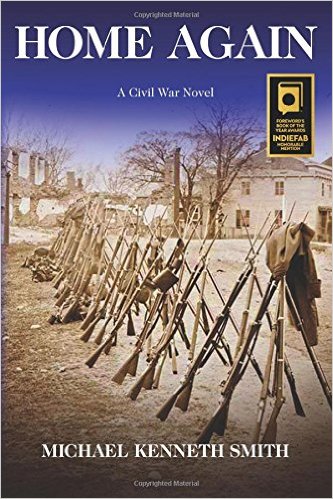Those who pay attention to the world of Civil War history are well aware that Mark W. Geiger’s recent work, Financial Fraud and Guerrilla Violence in Missouri’s Civil War, 1861-1865, is an important one. Geiger was awarded the Tom Watson-Brown Book Prize by the Society of Civil War Historians and The Watson-Brown Foundation for his in-depth study of a massive and, heretofore, undiscovered check-kiting scheme operated by a network of planters during the Civil War to fund the Missouri State Guard. After reading Geiger’s work, one can easily see why the prize committee selected it for such a prestigious (and generous) award.
Built on an impressive foundation of quantitative research, Financial Fraud makes major contributions to the fields of memory and guerrilla warfare in the Civil War. Though Geiger’s documentation of the fraudulent lending used to arm Confederate forces is quite the accomplishment, his work is truly dynamic, powerful, and contentious in his analysis of the unintended consequences and fallout from the conspiracy. Whereas other southern states had employed similar methods for privately funding their armies, Geiger argues that the bad loans in Missouri ultimately led to developments that were unique to the state: guerrilla warfare and the near-total destruction of the planter class. In Missouri, the formal forces of the Confederacy handed the state over very early in the war and a Union occupation force was in place across the state as early as spring 1862. With pro-Union officials in charge of the civil courts and the banks, involved financial institutions sought to recoup their losses from the promissory note signers. In many cases this meant that the signers and cosigners had to sell their land. Young men related to these landholders responded—by going into the brush to help wage guerrilla war against a Union force that they viewed as having stolen their land. However intense the guerrilla violence was, the Union forces prevailed in the state and a large number of planters had lost their land and, with it, their status at the top of Missouri society. Where planters across the South could withstand the loss of their property in slaves by going from labor lords to landlords, Missouri’s wealthiest white agrarians could not.
One of the bright spots of Geiger’s work is his historical method that is something of a throwback to the old school quantitative social history of the 1970s. There is no doubt that Geiger’s research benefitted from the skills that he acquired during his years in finance and accounting before becoming an historian. Seeing beyond the numbers and names that appeared on thousands of bank records and legal documents from county courthouses across the rural landscape, Geiger recognizes and reconstructs a financial conspiracy that descended downward from governor Claiborne Fox Jackson to hundreds of planters along lines of kinship. And, for the curious reader, Geiger has even placed his documentation in the various appendices of his work.
Of the two arguments that grow out of Geiger’s analysis, his assertion that guerrilla warfare reached its most intense levels in Missouri as a result of land seizures offers the most potential for controversy. To his credit, Geiger takes the established argument that the guerrilla war was exceptional for its random violence and bloodshed, and offers a systematic and structural reason for all the apparent mayhem. In doing this, he is influenced by the work of Don R. Bowen who illustrated some thirty years ago that guerrilla warfare was a systematic response by the sons of slaveholding families to the fear of losing one’s inherited property in slaves. Like Bowen, Geiger demonstrates that it was not just anyone who took up guerrilla warfare, but members of the planter class and their relations.
Though Geiger’s evidence shows a connection between the repercussions of the failed check-kiting scheme and guerrilla warfare, the degree to which the loss of land played a role in guerrilla violence is still difficult to measure. If we take the guerrillas at their word, they claim that they went into the brush and acted violently toward other men for many reasons: their property in slaves was stolen, their fathers were attacked and killed, their mothers and sisters were assaulted, arrested, and banished, and their own lives were threatened. In fact, Geiger plainly admits that the guerrillas themselves do not refer directly to the loss of land as the reason for going into the brush, leaving the door ajar for criticism as to the causality of guerrilla violence. However, it is clear to this reader that Geiger has shown that land played a major role in the guerrillas’ fight. Though some argue for other causes at the root of guerrilla violence, it seems more than likely that the origins of guerrilla violence were rarely, if ever, singular or compartmentalized. The men who fought as guerrillas understood these things to be connected—slaves, land, family, and political allegiance—and any threat to one of these things was perceived as an assault on the entire system.
Geiger’s award winning work provides much greater contributions to the field than whatever criticism might be mustered. Scholars and buffs alike will enjoy reading Geiger’s work. Moreover, his book serves as an example of the type of work that can be done when new approaches are brought to bear on the study of the past. This does not mean that scholars need to hunt for a conspiracy like the one uncovered in Financial Fraud and Guerrilla Violence in Missouri’s Civil War. Rather, historians simply need to remember that recasting history into a form that more clearly represents the past requires one to break the mold every now and then.
Joseph M. Beilein, Jr., is currently finishing his doctorate in history at the University of Missouri and is the author of a forthcoming article in Civil War History entitled “The Guerrilla Shirt: A Labor of Love and the Fashion of Rebellion in Civil War Missouri.”




